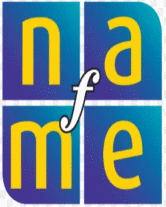Games and activities to help students learn the difference between speaking and singing.
Distinguishing Speaking vs. Singing
Sometimes students use a speaking voice register for singingbecause they do not hear or understand that a difference existsbetween speaking and singing. The following tips are helpful forthese students.
- Be sure to use accurate and consistent terminology when givingdirections to students. Use "sing" when you wish the students to usea singing register. Use "chant" when you want the students to speakwords in rhythm in a speaking register.
- Two puppets one whose voice is high and who loves the sound ofthe singing voice and one whose voice more closely approximatesthe speaking register may be used to cue the switch between vocalregisters. Students love saying their favorite chants with phrasesalternating between registers upon cue from the puppets. And soloopportunities to demonstrate Ms. Elephant's (or whoever's) voiceare sought eagerly. This concrete experience helps in other contexts,as students can be reminded to use Ms. Elephant's voice, rather than_____'s voice, to sing a particular song.
- Play games that help students learn the difference between asinging voice and a speaking voice. For example, play Simon Sings,a game similar to Simon Says, except that the students may only dowhat you sing, not what you say. The words "Simon says" are notused. The students may also echo your sung or chanted direction,thus experimenting with both "voices." Once the students are comfortable with this game, a student may replace you as "Simon."
- Designate a puppet to respond only to singing voice, not to speech.Examples are a turtle puppet that only comes out of its shell, or asleeping doll who only wakes up, or a cone puppet that only popsup when someone sings to it. Of course, the puppet responds bysinging but gives no response to spoken words.
- Teach the song "Ten in a Bed," focusing on use of the singing voicethroughout except for "Good Night!," which uses the speakingvoice. Once students are comfortable with the song, try the following.
- Have students close eyes.
- Walk in and around students as all begin to sing "Ten in a Bed."
- Tap one student on the shoulder andonly that student sings "Roll over! Roll over!" in singing voice.
- Class identifies the mystery singer and the game continuesthrough the rest of the verses.
- You can help develop the use of the upper register by selectingsong materials that do not remain in the lower range and by havingthe students perform arpeggio patterns, and so forth, in a slightlyhigher key, perhaps the key of E or even F. It may also be helpful tothe students to have them echo some tonal patterns with descendingmelodic contour before singing any songs in each class. The neutralsyllable "whoo" seems to work best. This vowel is focused but nottight and the "wh" usually prevents a glottal stop from occurring.These patterns should start on the C above middle C; graduallybegin the students on an even higher note.
- Chant nursery rhymes in various voices and at varying dynamiclevels. Let the students suggest which voice to use.











